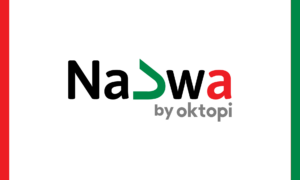The Sudbury method is a framework in which children are responsible for their own daily tasks, within a group of mixed ages, from 6 to 19 years old. The first Sudbury Valley School was founded by Daniel Greenberg in 1969 and was located in Framingham (Massachusetts, USA). There are around 40 Sudbury schools around the world today. The Sudbury approach, which has evolved a lot since its first application, is based on two foundations:
1. Autonomous Learning:
In this type of school, young people are free to determine their own goals, and the same legitimacy is given to all fields. They devote themselves to what interests them without any constraints of schedule or time. In connection with their nature and their deep aspirations at every moment, they play, explore and practice their centers of interest. With self-responsibility as a “pillar skill” serving as a breeding ground for developing all other life skills, Sudbury School members benefit from a framework that allows them to develop all the tools they need to grow as a productive member of society.
Regardless of age, learners participate in collective decisions: writing and application of internal regulations, development, and maintenance of the premises, management of educational resources, finances, human resources, public relations … The members thus learn to evolve within an association of people involved in a common project, just as adults do in their real life: in business, in family, and in society. They acquire, through experience, a deep understanding of the complex issues of living together and the responsibility of each individual to do their part in protecting the collective framework.
Staff members guarantee this approach through their commitment to cooperate with children and treat them as independent people. That way, they erase the relations of domination still widespread today between adults and children. Their role is to ensure a framework conducive to all learning: a safe space in the broad sense (physical, psychological, social) where everyone feels comfortable and confident. The staff also make their experience and knowledge available to the learners, although the students’ learning derives mainly from their dynamic interactions within the school.
2. Democratic Management:
The second pillar of this method is democratic management. Their vision of democratic education is that given by the EUDEC (European Democratic Education Community):
“Young people should be able to choose what to do, when, where, how and with whom, as long as their decisions do not infringe the freedom of others to do the same. They should also enjoy an equal share of decision-making power over the functioning of their organization, in particular over internal regulations and their application, thus helping to establish a framework of freedom, trust, security, and respect. “
The school thus grants each member, whatever their age, an equal share of power over decisions concerning the collective, according to a system of direct democracy (1 person = 1 vote). Everyone has an equal place in the school, whether one is a child or a member of the staff, whether it is in decision-making or the ability to create and change the school environment. This common and collective responsibility of the school is essential for everyone’s freedom.
This system itself is based on two organs:
The School Council
The School Council is the school authority, making all decisions concerning the collective. It brings together all the voluntary members and takes its decisions by a majority of the votes cast. It takes place in a spirit of research and co-construction of solutions that best satisfy the needs of the collective, far from the logic usually observed of one camp facing another.
It is the body deciding on the edition of the rules of procedure, and it delegates to a “Council of Justice” the responsibility for deciding sanctions when rules have been transgressed. They also delegate management responsibility to various committees (for example: finances, room layout, admissions). Within a committee, various officials can be appointed according to the needs and the tasks to be carried out.
To ensure transparency and opportunities for appeal, the Justice Council and the Committees systematically present their Reports to the Works Council and run the risk of their decisions being called into question. The School Council is thus the sole authority validating all the decisions of the school.
The Justice Council
The Justice Council is a delegation of the School Council responsible for deciding the sanctions to be applied as a result of transgressions to the internal regulations. This Council plays a central role in protecting the climate of freedom and mutual respect, which is fundamental to the proper functioning of any democratic school.
The Justice Council generally takes place in a spirit of cooperation to solve problems together, between willing members. It is the general interest that is at stake, and the working basis is a shared desire to solidify a secure framework that allows people to live together while protecting the private space and the freedom of each individual.
One of the common misconceptions about Sudbury Schools is that it must be easy, since children are allowed to do what they want without a teacher telling them what to do. Professionals state that a Sudbury school is hard for exactly the same reason people think it is easy. With no one telling the students what to do, the students are left with no choice but to decide what to do on their own. This is much more difficult than simply following instructions.
The Sudbury philosophy is about trusting that children are motivated enough to learn. Just like they were motivated enough to learn how to walk, eat or talk, when given the right tools, freedom, and confidence, they will be motivated enough to take the empowering path of moving from childhood to adulthood.












